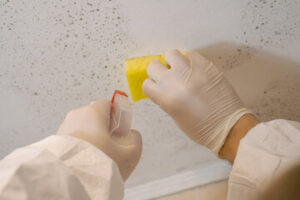
Hvac Lexington KY is an essential part of any home. Understanding the basics can help you avoid skyrocketing energy bills and costly repairs.
These systems control temperature, keep humidity levels balanced and maintain air quality in buildings. They also ensure that machinery and equipment function optimally, boosting productivity rates. In some cases, they even minimize product spoilage and waste.
Heat Pumps
Heat pumps connect to your ductwork and transfer thermal energy between the air outside your home and the air inside. This makes heat pump systems more efficient than electric resistance furnaces or baseboard heaters. Today’s air-source heat pumps can reduce electricity use for heating by 65%, compared to traditional electric furnaces. They can also dehumidify more efficiently than conventional central air conditioners, resulting in lower energy consumption during summer months.
Air-source heat pumps are available in two configurations: air-to-air and direct expansion (DX). In air-to-air heat pump systems, the evaporator coil is located in the ductwork or in the house. In DX systems, the evaporator coil and condenser are located in an outdoor unit.
The performance of heat pumps varies by climate and installation. Energy efficiency regulations set minimum seasonal efficiencies for air-source heat pumps, and some provinces or territories may have additional requirements. Check the NRCan Air-Source Heat Pump Sizing and Selection Guide for more information.
Air-source heat pump performance has improved significantly over the last 15 years. Some units now achieve SEER ratings of 42 and HSPFs of 13. These improvements are largely the result of advances in compressor technology and heat exchanger design, which allow heat pumps to operate at higher capacity and efficiencies in cold climates.
To maximize the seasonal performance of heat pumps, select a model with a high HSPF, and a low sound rating (decibels). A long defrost cycle reduces a heat pump’s seasonal efficiency. Avoid unnecessary defrost cycles by selecting a unit with demand-defrost control. These systems start the defrost process only when needed, to minimize supplementary energy use and heat pump run time. In addition, minimize energy losses by reducing air leakage and insulating ducts (see Minimizing Energy Losses).
Ductless Systems
Ductless systems, also known as mini-splits, allow cooling and heating to be added to a home or business without having to install extensive distribution ductwork. This makes them a perfect solution for new rooms or renovations, sunrooms, garages and other areas that were previously not considered an option for air conditioning. They are easy to maintain and have a low cost of installation. A ductless system can have up to eight indoor air handler units connected to one outdoor condensing unit. Each air handler has its own remote control that controls the temperature in that room.
With a traditional HVAC system, ducts act like highways for treated air. Unfortunately, they also provide a place for dust, debris and other contaminants to collect. Regular maintenance is crucial to keep the ducts clean and free from these harmful materials, which will save you money on your energy bills over time.
A ductless system doesn’t require ductwork, so the air handling units can be installed in small spaces such as walls or ceilings. Installation is completed quickly and with little or no damage to your building structure. Ductless systems are quieter than traditional HVAC equipment, as well. They are a perfect fit for older homes or those that have no attic, crawl space or closet space for ductwork.
A ductless system is very energy efficient. Because they only operate for smaller spaces, utility costs are much lower than a centralized AC system that has to work hard to push air through the ducts. Zoning is another great feature of a ductless system, since you won’t waste money on cooling rooms that aren’t used. This is an especially important benefit in a large home or office.
Gas Furnace
Whether it’s natural gas or propane, a gas furnace converts cool air into warm air and distributes that air throughout the house. Like other hvac systems, your gas furnace has many components that work together to keep it functioning properly. A basic understanding of how your system works can help you troubleshoot problems when something goes wrong.
The heart of any hvac unit is the heat exchanger. This series of thin-walled metal tubes keeps the combustion process separate from the air blowing out of your home through the blower fan. The cold air blown over the heat exchanger is warmed, then redirected into your home through ducts. A blower fan carries the air over the heat exchanger, and there’s usually a thermostat that tells the blower when to turn on.
Inside your furnace is a circuit control board that interprets electrical signals from the thermostat and from its own internal sensors. If the thermostat sends a signal that it’s time to produce heated air, the control board tells the gas valves and burners to open and ignite.
Once the fuel is burned, it’s exhausted through a flue. The exhaust gases can’t just disappear into the air, so the flue is tasked with collecting those by-products and directing them out of the house. There may also be a carbon monoxide detector installed to prevent dangerous leaks.
The gas supply lines should connect from the gas meter to an internal gas valve and manifold. There’s usually a shutoff valve located near the meter that can be opened to isolate the gas if necessary. The piping should have a drip leg to prevent water condensation from leaking into the gas line, and it should be pressure tested with an inert gas such as nitrogen.
Electric Furnace
Electric furnaces operate similarly to gas and heat pumps, though they use electricity instead of natural gas to warm the home. Using a blower fan, they pull air into the system and through a heat exchanger. Then, the heated air gets pushed through the home’s ductwork and into each room. The thermostat signals the system to start up and shut down as needed to achieve the desired indoor temperature.
The power that drives the heating elements of an electric furnace is supplied by 1-2 large wires that connect to the unit’s breaker box. These lines carry 240 volts of electricity, which the electrical transformer inside the heater reduces to a lower voltage. It then sends 24 volts to the sequencer, which determines whether or not the system should turn on.
When the sequencer signals that the furnace is starting up, it sends those 24 volts to the blower motor and to the heating coils. The coils heat the air that is being blown by the blower through a process similar to that used in a hair dryer. Once the thermostat indicates that the house has reached a set temperature, the sequencer shuts off the heating elements and the blower fan.
Just like other types of hvac systems, a properly sized electric furnace is key to its performance and longevity. A professional can help you select a furnace that matches your budget, square footage, layout, and climate zone. A well-sized system is also more energy efficient, saving you money on utility bills. If you want to maximize your efficiency, pair it with a programmable thermostat. You can also opt for zone heating, which allows you to control how much air goes into each room of the house.
Air Conditioner
Air conditioners are designed to cool your home, removing heat and humidity from the air and pushing it outside through ductwork. There are several variations of AC systems, including central cooling units, portable window units and ductless mini splits. However, the fundamental processes and parts remain the same for all of them.
A typical AC system contains the compressor and condenser in an outdoor unit, the evaporator coil inside your home, and a blower fan. The evaporator coil is covered in fins that absorb the heat energy from the air, and the blower fan circulates the cooler, dehumidified air throughout your home. Air conditioning systems also come in multiple speeds, sizes/capacities (measured in “tons”), and SEER ratings. SEER stands for Seasonal Energy Efficiency Ratio and it’s used to compare the efficiency of different air conditioners. The higher the SEER rating, the more efficient the unit.
The refrigerant in an air conditioner starts out in a liquid form and moves to the compressor. The compressor is the heart of an AC and it uses the majority of the system’s power. It squeezes the cool refrigerant vapor and increases both its temperature and pressure significantly.
When it reaches the evaporator coil, the heat energy in the air is absorbed by the evaporator and the refrigerant vapor evaporates. The resulting water condensation runs down the coil’s fins and drains into the pan.
Then, the refrigerant returns to the compressor where it begins the cycle all over again. If the air flow is too low in your evaporator coil, it will lead to poor dehumidification and cooling. Likewise, if the airflow is too high in the compressor, it may overwork the system and eventually freeze up.



